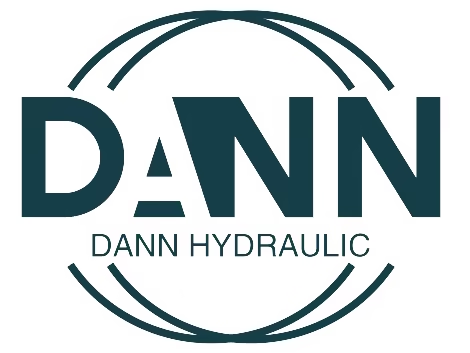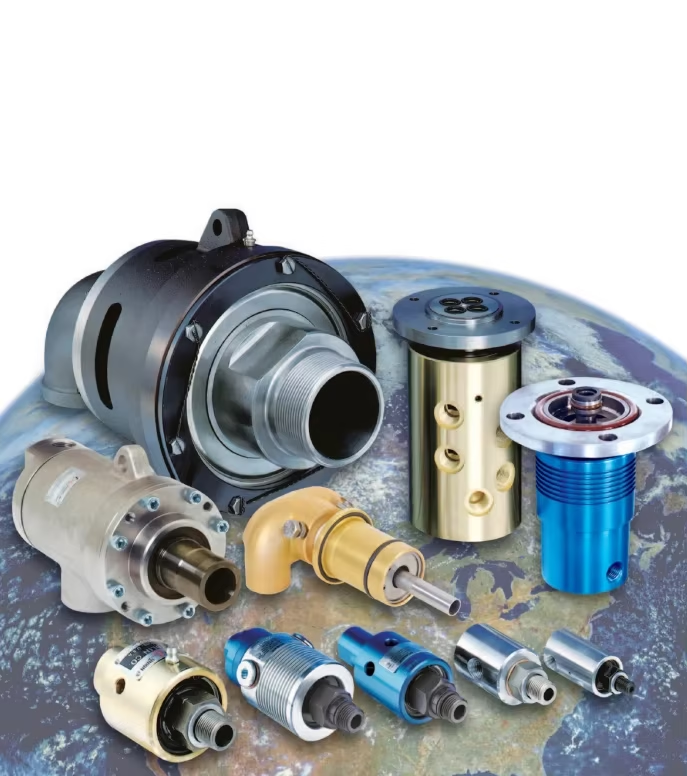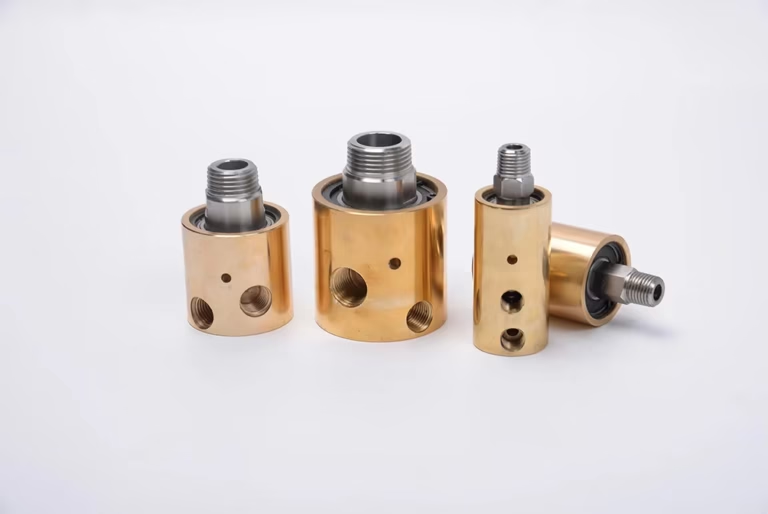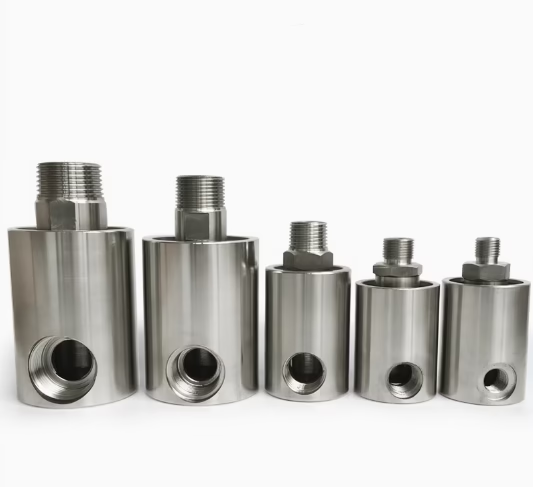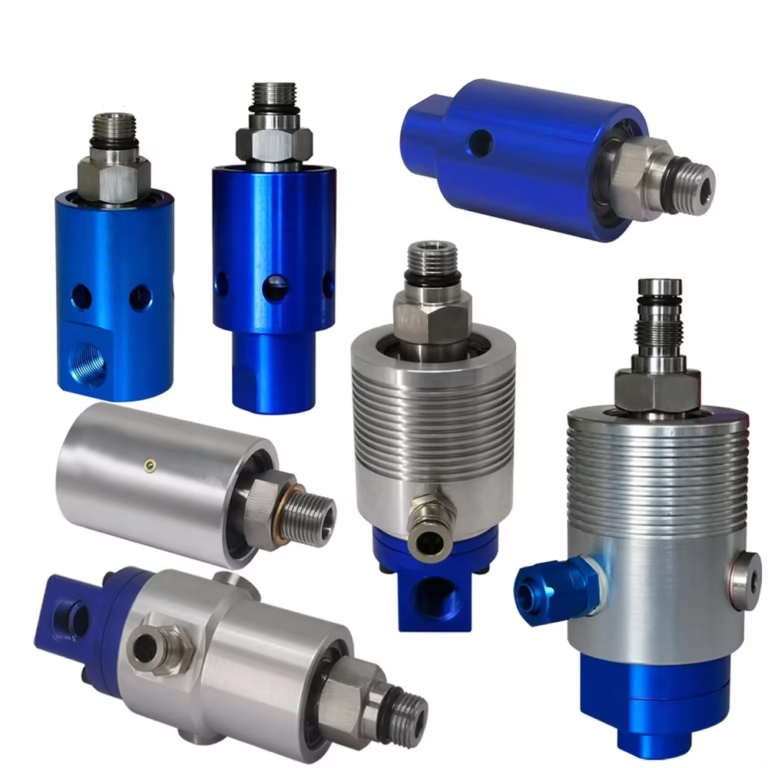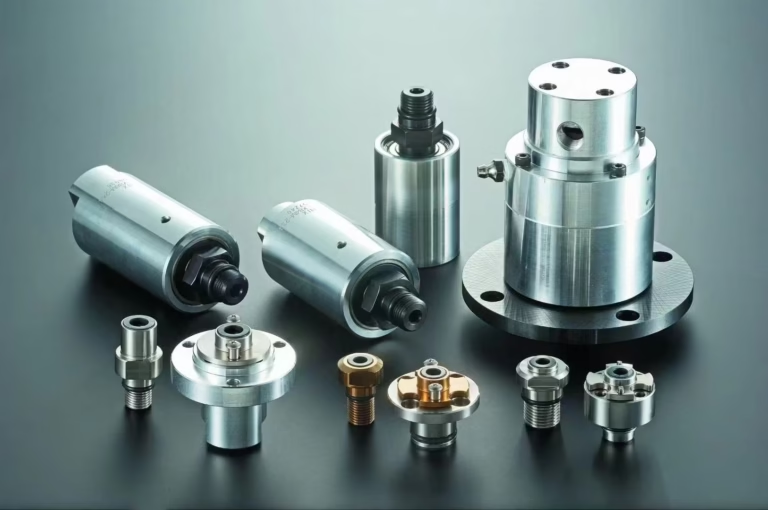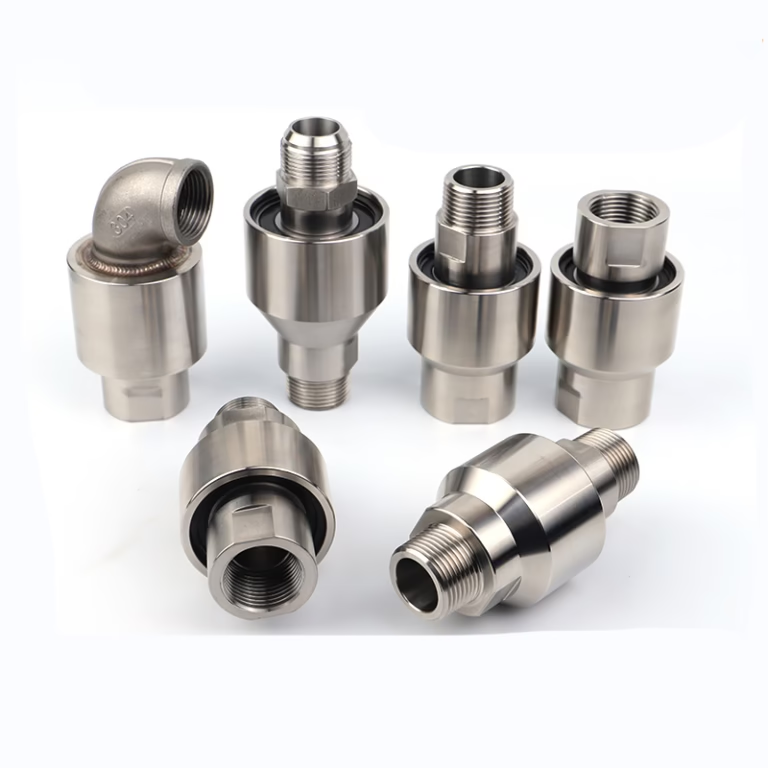How to Order Rotary Union from China
Introduction
In the dynamic world of industrial equipment, rotary unions play a crucial role in various sectors, facilitating the transfer of fluids, gases, and power between stationary and rotating components. If you’re in the market for high-quality rotary unions, sourcing from China can be a game-changer. With its vast manufacturing capabilities, competitive pricing, and diverse product range, China has emerged as a global hub for industrial supplies. However, navigating the process of order rotary union from China can seem daunting, especially if you’re new to international procurement. This comprehensive guide will walk you through every step of the process, from initial research to final delivery, ensuring a smooth and successful purchasing experience.
Understanding Rotary Unions: Types, Applications, and Requirements
Before diving into the ordering process, it’s essential to have a clear understanding of rotary unions. These devices come in various types, each designed for specific applications and operating conditions. The most common types include hydraulic rotary unions, pneumatic rotary unions, and high-temperature rotary unions. Hydraulic rotary unions are widely used in construction equipment, automotive manufacturing, and material handling systems, while pneumatic rotary unions find applications in the food and beverage, pharmaceutical, and packaging industries. High-temperature rotary unions, on the other hand, are essential in processes involving extreme heat, such as metalworking, power generation, and chemical processing.
To determine the right rotary union for your needs, consider factors such as the type of fluid or gas being transferred, operating pressure and temperature, rotational speed, and connection size. You’ll also need to specify any additional features or requirements, such as seals made from specific materials, anti-corrosion coatings, or custom designs. Having a detailed understanding of your application requirements will help you communicate effectively with suppliers and ensure you receive a product that meets your expectations.
Conducting Market Research: Finding Reputable Suppliers
Once you have a clear idea of the rotary union you need, the next step is to find reliable suppliers in China. Start by conducting thorough market research using online directories, industry-specific platforms, and search engines. Websites like Alibaba, Made-in-China, and Global Sources are excellent resources for connecting with Chinese manufacturers and suppliers. These platforms allow you to browse product catalogs, compare prices, and read customer reviews, making it easier to identify potential partners.
In addition to online platforms, consider attending trade shows and exhibitions focused on industrial equipment and machinery. Events such as the China International Industry Fair (CIIF) and the Canton Fair provide opportunities to meet suppliers in person, view their products up close, and establish direct business relationships. Networking with industry professionals and peers can also lead to valuable referrals and recommendations.
When evaluating potential suppliers, look for companies with a proven track record of quality, reliability, and customer service. Check their certifications, such as ISO 9001 for quality management systems, and inquire about their manufacturing processes and quality control measures. Read customer testimonials and reviews to get an idea of their reputation in the market. Don’t hesitate to ask for samples or product specifications to assess the quality of their products before placing a large order.
Communicating with Suppliers: Requesting Quotes and Samples
Once you’ve identified a few potential suppliers, it’s time to reach out and start communicating. Send detailed inquiries to each supplier, providing them with clear specifications of the rotary union you need, including type, size, material, and any special requirements. Ask for a quote that includes the unit price, minimum order quantity (MOQ), production lead time, and shipping costs. Be sure to request samples if possible, as this will allow you to test the product’s performance and quality before committing to a larger order.
When communicating with suppliers, it’s important to be clear, concise, and professional. Use email or instant messaging platforms like WhatsApp or Skype to stay in touch and ask any questions you may have. Keep in mind that there may be a time difference between your location and China, so be patient and allow sufficient time for suppliers to respond. Build a good rapport with your suppliers by being respectful, responsive, and willing to negotiate.
Negotiating Terms and Conditions: Price, Delivery, and Payment
After receiving quotes and samples from different suppliers, it’s time to compare your options and negotiate the best terms and conditions. When it comes to price, don’t be afraid to negotiate. Many Chinese suppliers are willing to offer discounts for large orders or long-term partnerships. However, keep in mind that the lowest price may not always be the best option. Consider factors such as product quality, production lead time, and after-sales service when evaluating offers.
In addition to price, pay close attention to the delivery terms and conditions. Discuss the expected delivery date, shipping method, and any associated costs. Make sure the supplier can meet your delivery requirements and has a reliable logistics partner to ensure the timely and safe transportation of your order. If you have specific shipping preferences, such as using a particular freight forwarder or shipping line, communicate this to the supplier in advance.
Payment terms are another crucial aspect of the negotiation process. Most Chinese suppliers prefer to receive payment upfront, especially for new customers. However, you may be able to negotiate more favorable terms, such as a partial upfront payment followed by the balance upon delivery. Common payment methods include telegraphic transfer (TT), letter of credit (LC), and PayPal. Each method has its advantages and disadvantages, so choose the one that works best for you and your supplier.
Placing the Order: Finalizing Details and Confirming Delivery
Once you’ve agreed on the price, delivery terms, and payment method, it’s time to place your order. Before finalizing the order, double-check all the details, including the product specifications, quantity, delivery address, and payment instructions. Make sure everything is accurate and in line with your expectations. If you have any concerns or questions, don’t hesitate to reach out to the supplier for clarification.
After confirming all the details, send a purchase order (PO) to the supplier. The PO should include all the relevant information, such as the product description, quantity, unit price, total amount, delivery date, and payment terms. The supplier will then review the PO and send you a confirmation, usually in the form of a sales contract or proforma invoice. Review the confirmation carefully and make sure all the details match your PO. Once you’re satisfied, sign and return the confirmation to the supplier to officially place your order.
Tracking the Order: Monitoring Production and Shipping Progress
After placing your order, it’s important to stay informed about the production and shipping progress. Most suppliers will provide you with regular updates on the status of your order, including the estimated production completion date and shipping schedule. You can also request tracking information from the supplier once your order has been shipped. This will allow you to monitor the movement of your shipment and estimate its arrival time.
Use online tracking tools provided by the shipping carrier or freight forwarder to stay updated on the location of your shipment. If you encounter any issues or delays during the shipping process, contact the supplier and the shipping carrier immediately to resolve the problem. Keep in mind that international shipping can be subject to various factors, such as customs clearance, port congestion, and weather conditions, which may cause delays. Be prepared to be flexible and patient throughout the process.
Logistics and Shipping
A. Choose a Shipping Method
Sea Freight: Cost-effective for bulk orders (4–6 weeks).
Air Freight: Faster (5–7 days) but 5x more expensive.
Express Couriers: DHL/FedEx for samples (3–5 days).
Pro Tip: Use Freightos.com to compare rates.
B. Customs Clearance
Incoterms: Agree on FOB (Free On Board) or CIF (Cost, Insurance, Freight). FOB shifts more responsibility to you but saves costs.
HS Code: Rotary unions fall under HS code 84842000. Use this for accurate duty calculations.
C. Calculate Duties and Taxes
Use tools like SimplyDuty.com to estimate import taxes. For example, the EU charges a 2.7% duty on rotary unions, while the US has no duty under certain trade agreements.
Receiving and Inspecting the Order: Ensuring Quality and Compliance
When your order arrives, it’s important to inspect the goods carefully to ensure they meet your expectations and comply with the agreed-upon specifications. Check the packaging for any signs of damage or tampering. Open the packages and inspect the rotary unions for any visible defects, such as cracks, leaks, or missing parts. Test the functionality of the rotary unions if possible, using the appropriate equipment and procedures.
If you discover any issues or discrepancies with the order, contact the supplier immediately to report the problem. Provide them with detailed information, including photos or videos of the defects, and explain the impact on your operations. The supplier will then work with you to resolve the issue, which may involve replacing the defective items, providing a refund, or offering a discount on future orders.
After-Sales Support
The relationship doesn’t end at delivery:
A. Warranty Claims
Document defects with photos/videos. Most suppliers offer replacements within 30 days.
B. Long-Term Partnerships
Repeat orders can fetch discounts (5–10%) or priority production.
Common Pitfalls and How to Avoid Them
A. Language Barriers
Use translation tools like DeepL or hire a bilingual agent (15–30/hour).
B. Intellectual Property Theft
If customizing, file a design patent in China via WIPO before sharing specs.
C. Hidden Costs
Factor in:
Customs broker fees (100–300).
Warehouse storage if delays occur.
Alternative Sourcing Options
A. Trading Companies vs. Factories
Trading Companies: Easier communication but higher prices.
Factories: Lower costs but may lack export experience.
B. Use a Sourcing Agent
Agents like Chinaimportal charge 3–5% commission but handle negotiations, QC, and logistics.
After-Sales Service: Dealing with Warranty Claims and Technical Support
Even after receiving and inspecting your order, your relationship with the supplier doesn’t end. A reliable supplier will offer after-sales service, including warranty support and technical assistance. Familiarize yourself with the supplier’s warranty policy and terms before placing your order. Make sure you understand what is covered under the warranty, how to file a claim, and the expected turnaround time for resolving issues.
If you encounter any technical problems or have questions about the operation or maintenance of the rotary unions, don’t hesitate to contact the supplier’s technical support team. Most suppliers have dedicated teams of engineers and technicians who can provide you with expert advice and assistance. They may also offer training services or online resources to help you get the most out of your rotary unions.
FAQ: How to Order a Rotary Union from China
Q1: How can I verify a Chinese supplier’s credibility before placing an order?
Start by checking their status on B2B platforms like Alibaba (e.g., “Gold Supplier” badges). Request factory videos, export history (via tools like Panjiva), and certifications (ISO, CE). Hire a third-party inspector (e.g., SGS) to audit their facility and verify production capabilities. Always cross-check certifications with issuing bodies to avoid fakes.
Q2: What payment methods are safest when dealing with Chinese manufacturers?
For small orders, use Alibaba Trade Assurance or PayPal for buyer protection. For larger transactions, opt for a Letter of Credit (L/C) to ensure payment release only after you confirm delivery. Avoid direct bank transfers without guarantees. Negotiate flexible terms like 30% deposit + 70% before shipping to balance risk and cash flow.
Q3: What if the rotary union doesn’t meet specifications after delivery?
Document defects with photos/videos and contact the supplier immediately. Most reputable factories offer replacements or refunds within 30 days under warranty. If disputes arise, involve your third-party inspector or the platform’s dispute resolution team (e.g., Alibaba’s Trade Assurance). To prevent issues, schedule a pre-shipment inspection to catch problems early.
Conclusion
Ordering rotary unions from China can be a cost-effective and efficient way to source high-quality industrial equipment. By following the steps outlined in this guide, you can navigate the procurement process with confidence and ensure a successful purchasing experience. Remember to conduct thorough research, communicate effectively with suppliers, negotiate favorable terms, and stay informed throughout the process. With the right approach and a reliable supplier, you can obtain the rotary unions you need to keep your operations running smoothly and efficiently.
Whether you’re a small business looking to optimize your production processes or a large corporation seeking to reduce costs, sourcing rotary unions from China offers numerous benefits. So, take the plunge and start exploring the world of Chinese suppliers today. With a little effort and due diligence, you’ll be on your way to securing high-quality rotary unions at competitive prices.
